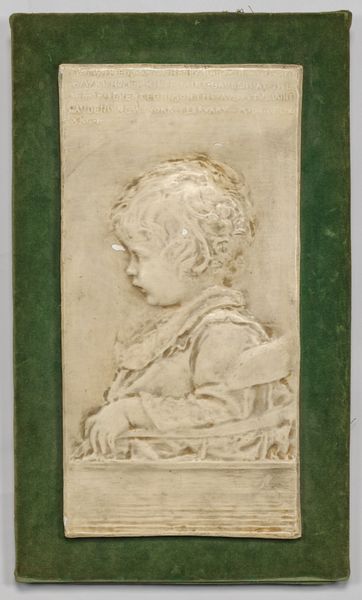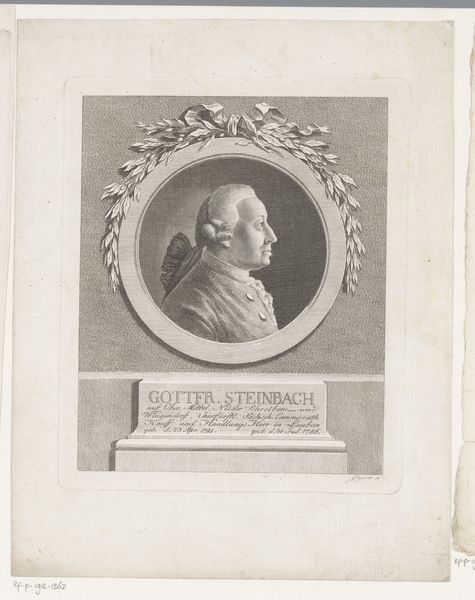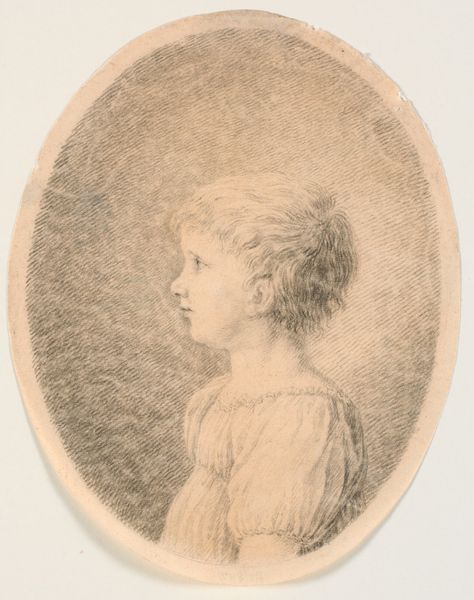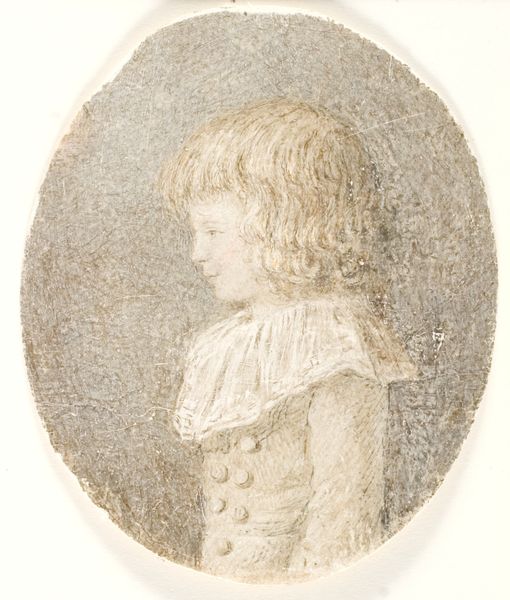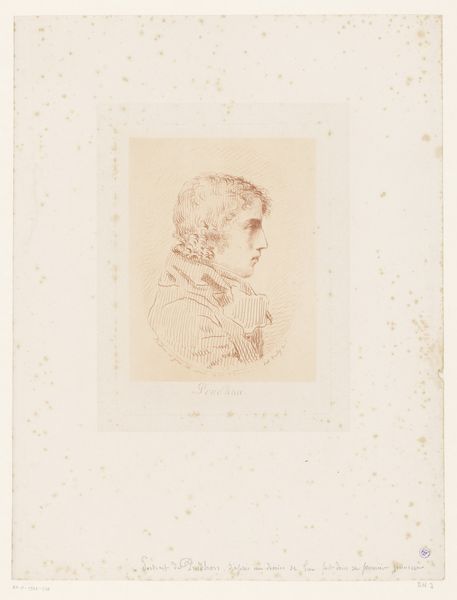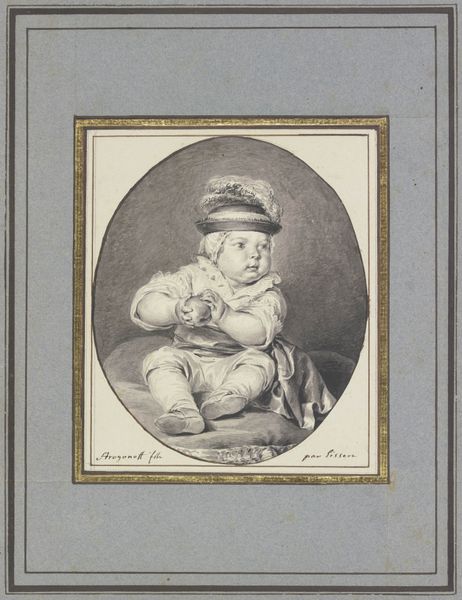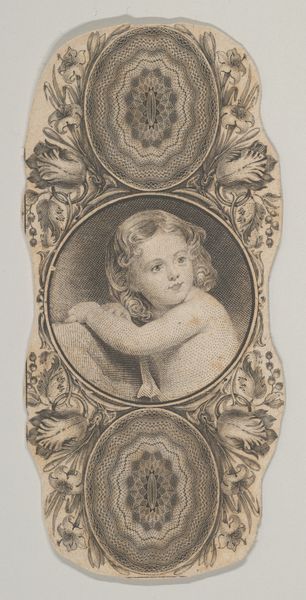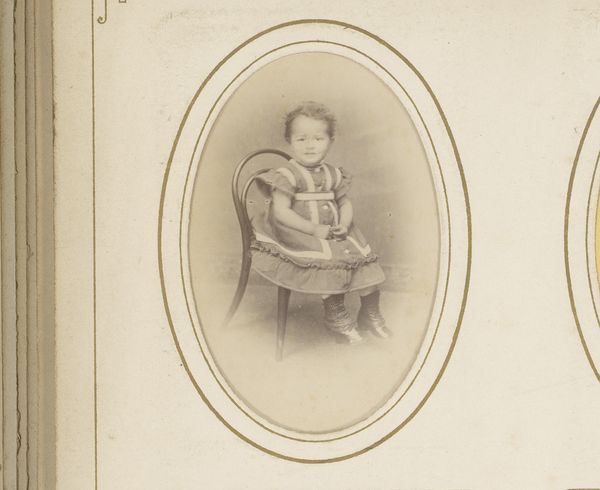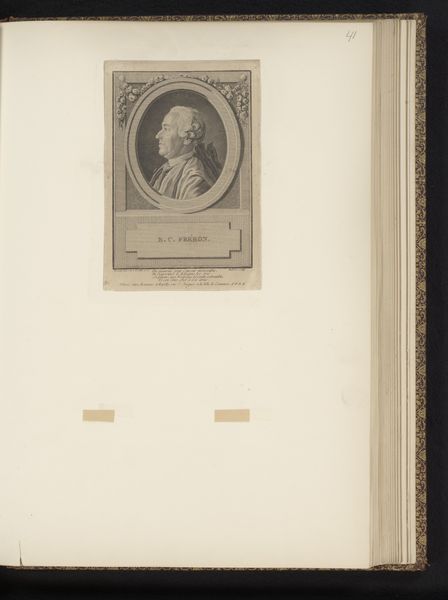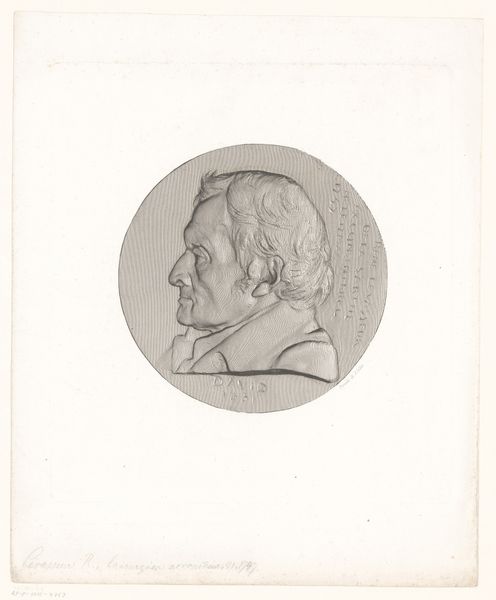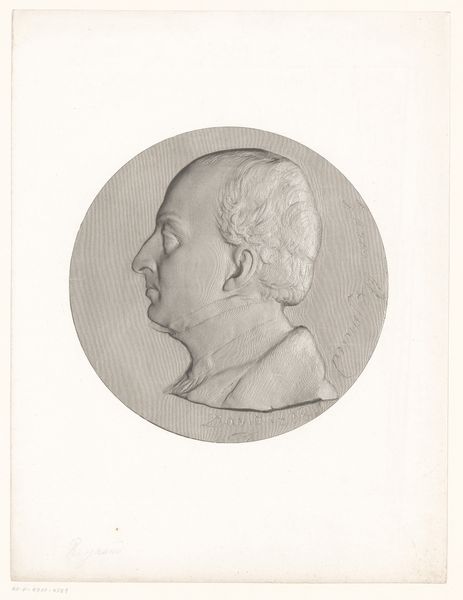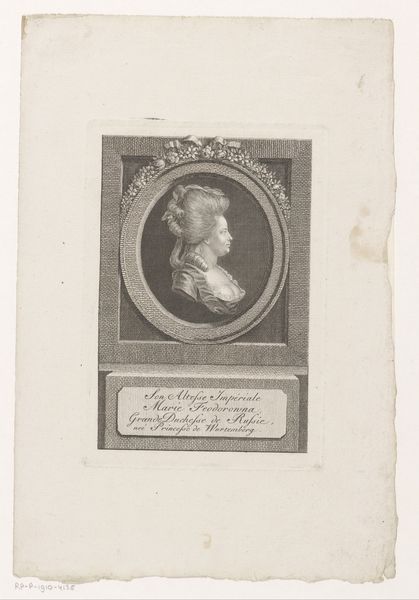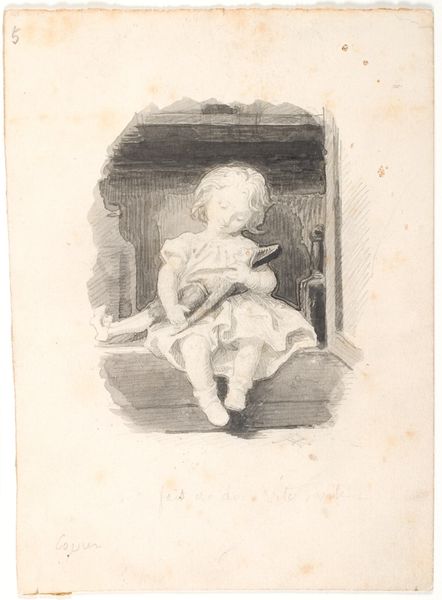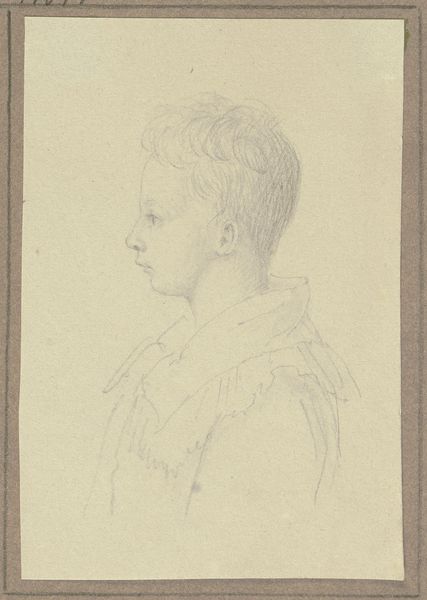
metal, relief, bronze, sculpture
#
portrait
#
metal
#
sculpture
#
relief
#
bronze
#
sculpture
#
united-states
#
texture
#
academic-art
Dimensions: 19.4 × 10.2 × 0.6 cm (7 5/8 × 4 × 1/4 in.)
Copyright: Public Domain
Editor: So this bronze relief is titled "Homer Schiff Saint-Gaudens" by Augustus Saint-Gaudens, and it seems to have been created between 1882 and 1907. I’m struck by how intimate it feels, the child’s downcast gaze and the texture of the bronze. What do you see in this piece? Curator: I see a potent connection to classical forms rendered through a distinctly American lens. Saint-Gaudens’s bronze is not merely a portrait but a cultural artifact laden with symbolic intent. Do you notice how the profile, with its delicate features, echoes ancient Roman portraiture, evoking a sense of timelessness and enduring legacy? Editor: I do. And it's almost like a cameo in its presentation. What's the deal with the writing in the top portion of the work? Curator: That inscription isn't just decorative, it functions as a "speaking likeness". Inscriptions have long served as devices, anchoring the depicted subject within a historical and cultural framework. Note the name, date, and location are akin to an epitaph, fixing young Homer within the narrative of his life and the aspirations of his family. Do you think that affects how we see the child? Editor: That's fascinating. I suppose it makes him less generic, but also adds to the sense of melancholy. He becomes an individual facing time. The rough texture of the bronze makes the figure seem…vulnerable, doesn't it? Curator: Precisely. Saint-Gaudens has captured something profoundly human—the intersection of individual identity and the larger currents of cultural memory. In my opinion, that makes it timeless. Editor: Thank you; I learned so much about cultural and familial memory inscribed into a portrait. I hadn’t noticed how those elements were carefully constructed through bronze. Curator: My pleasure. And I was happy to see you draw the connection with texture conveying deep emotions.
Comments
No comments
Be the first to comment and join the conversation on the ultimate creative platform.
